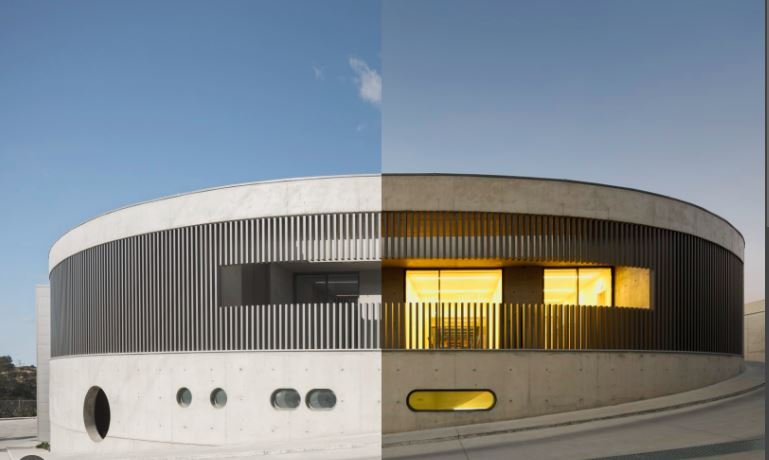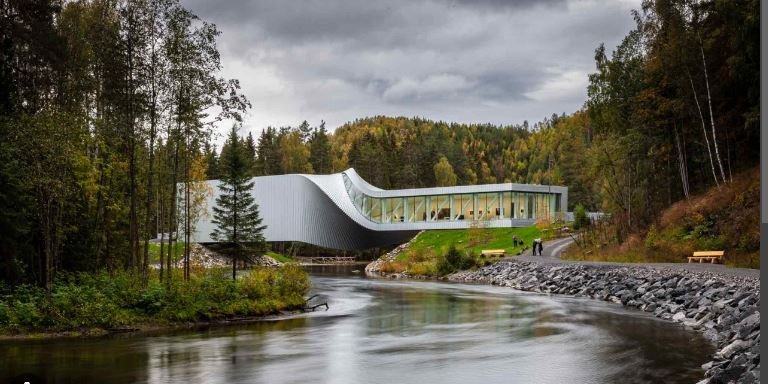Balancing aesthetics and functionality in architectural photography is crucial for creating compelling images that resonate with viewers. This balance ensures that the photographs not only highlight the beauty of the structures but also effectively convey their practical design and purpose.

Capturing Architectural Beauty
Capturing the architectural beauty is essential in architectural photography. Photographers must pay close attention to the lines, shapes, and forms that make up the building. By focusing on the design elements that contribute to the structure’s visual appeal, photographers can create images that highlight the artistic aspects of architecture.
Showcasing Practical Design
Showcasing practical design is equally important. Architectural photography should reveal how a building functions and serves its intended purpose. This involves capturing elements like entrances, exits, pathways, and other functional features that illustrate the building’s usability and efficiency.
The Role of Lighting
Lighting plays a pivotal role in balancing aesthetics and functionality. Natural light can enhance the textures and materials of a building, while artificial lighting can highlight specific functional areas. Photographers must understand how to use light to enhance both the beauty and practicality of architectural spaces.
Composition Techniques
Composition techniques are vital for balancing aesthetics and functionality. Using the rule of thirds, leading lines, and symmetry can help create visually appealing images while also directing attention to functional aspects of the architecture. Thoughtful composition ensures that both aesthetic and practical elements are given due prominence.
Highlighting Structural Details
Highlighting structural details is a key aspect of architectural photography. Capturing close-ups of materials, textures, and construction techniques can showcase the craftsmanship and quality of the building. These details contribute to the overall aesthetic appeal and also inform viewers about the building’s structural integrity.
Emphasizing Space and Scale
Emphasizing space and scale is important for conveying both the grandeur and functionality of a building. Wide-angle shots can capture the expansive nature of large structures, while including human figures or everyday objects can provide a sense of scale and usability. This approach helps viewers appreciate the building’s size and its practical applications.
Using Angles and Perspectives
Using angles and perspectives creatively can enhance both aesthetics and functionality. Low angles can make buildings appear more imposing and grand, while high angles can provide a comprehensive view of the layout and functional design. Experimenting with different perspectives can reveal new and interesting aspects of the architecture.
Incorporating Environmental Context
Incorporating the environmental context adds depth to architectural photography. Showing how a building interacts with its surroundings, such as urban landscapes or natural settings, can provide insight into its functionality and aesthetic harmony with the environment. This context helps viewers understand the building’s place within its broader setting.
The Importance of Post-Processing
Post-processing is essential for fine-tuning the balance between aesthetics and functionality. Adjustments to exposure, contrast, and color balance can enhance the visual appeal of the photographs while ensuring that functional details remain clear and prominent. Post-processing allows photographers to perfect their images and emphasize key elements.
Capturing Interior Spaces
Capturing interior spaces requires a focus on both beauty and usability. Photographers should highlight the interior design elements that contribute to the overall aesthetic while also showing how the space is organized and used. This dual focus helps create a comprehensive view of the building’s interior functionality and charm.
Balancing Human Elements
Balancing human elements in architectural photography adds a dynamic aspect to the images. Including people in the photographs can illustrate how the spaces are used and bring a sense of life and activity to the architecture. This approach enhances the understanding of both the practical and aesthetic aspects of the building.
Addressing Architectural Challenges
Addressing architectural challenges involves capturing buildings that may not be traditionally beautiful but are highly functional. Photographers must find ways to highlight the practical features of such structures while still creating visually engaging images. This balance requires creativity and a deep understanding of the building’s purpose.
The Role of Technology
The role of technology in architectural photography cannot be overstated. Advanced cameras, drones, and editing software enable photographers to capture and enhance both the aesthetic and functional aspects of architecture. Utilizing these tools effectively can lead to stunning and informative images.
Conclusion
Balancing aesthetics and functionality in architectural photography is essential for creating images that are both beautiful and informative. By focusing on design elements, lighting, composition, and the environmental context, photographers can capture the essence of architecture. This balance ensures that the photographs highlight the artistic and practical aspects of buildings, providing a comprehensive view that resonates with viewers.

